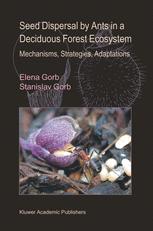

Most ebook files are in PDF format, so you can easily read them using various software such as Foxit Reader or directly on the Google Chrome browser.
Some ebook files are released by publishers in other formats such as .awz, .mobi, .epub, .fb2, etc. You may need to install specific software to read these formats on mobile/PC, such as Calibre.
Please read the tutorial at this link: https://ebookbell.com/faq
We offer FREE conversion to the popular formats you request; however, this may take some time. Therefore, right after payment, please email us, and we will try to provide the service as quickly as possible.
For some exceptional file formats or broken links (if any), please refrain from opening any disputes. Instead, email us first, and we will try to assist within a maximum of 6 hours.
EbookBell Team

5.0
38 reviewsCountless ants transport and deposit seeds and thereby influence the survival, death, and evolution of many plant species. In higher plants, seed dispersal by ants (myrmecochory) has appeared many times independently in different lineages. More than 3000 plant species are known to utilize ant assistance to be planted. Myrmecochory is a very interesting and rather enigmatic form of mutualistic ant-plant associations. This phenomenon is extremely complex, because there are hundreds of ant species connected with hundreds of plant species. This book effectively combines a thorough approach to investigating morphological and physiological adaptations of plants with elegant field experiments on the behaviour of ants. This monograph is a first attempt at collecting information about morphology, ecology and phenology of ants and plants from one ecosystem. The book gives readers a panoramic view of the hidden, poorly-known interrelations not only between pairs of ants and plant species, but also between species communities in the ecosystem. The authors have considered not just one aspect of animal-plant relationships, but have tried to show them in all their complexity. Some aspects of the ant-plant interactions described in the book may be of interest to botanists, others to zoologists or ecologists, but the entire work is an excellent example of the marriage of these biological disciplines.